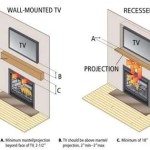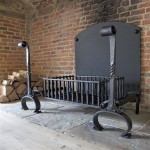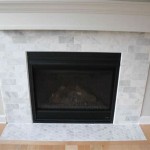How To Make A Fireplace Screen
A fireplace screen is an essential safety feature for any home with a functioning fireplace. It prevents sparks and embers from escaping the firebox and potentially causing a fire. Furthermore, a well-designed screen can enhance the aesthetic appeal of the fireplace. Building a custom fireplace screen offers the opportunity to tailor its size, style, and materials to perfectly match the existing decor and personal preferences. This article provides detailed instructions on constructing a durable and attractive fireplace screen.
Planning and Preparation
The initial stage of any successful project involves careful planning and preparation. This includes accurately measuring the fireplace opening, selecting the appropriate materials, and gathering the necessary tools. Taking the time to complete these preliminary steps ensures a smooth and efficient construction process.
Measuring the Fireplace Opening: Accurate measurements are crucial for creating a screen that fits properly and effectively contains sparks. Measure the width and height of the fireplace opening. Take these measurements at multiple points along the width and height, as fireplaces are not always perfectly square. Use the largest width and height measurements to ensure the screen adequately covers the entire opening. Also, note the depth of the hearth, as this will influence the design and placement of the screen's feet.
Selecting Materials: The choice of materials will significantly impact the screen's durability, appearance, and cost. Common materials include steel, wrought iron, and mesh. Steel provides a robust and cost-effective option. Wrought iron offers a more ornate and traditional aesthetic. Mesh is essential for preventing sparks from escaping. Consider using a heavy-gauge steel mesh for optimal protection and longevity. The frame can be constructed from steel tubing, angle iron, or flat bar stock, depending on the desired look and structural requirements. Wood frames are also an option, especially for decorative screens, but should be treated with a fire-retardant coating and placed a safe distance from the firebox opening.
Gathering Tools: A comprehensive collection of tools is essential for constructing a fireplace screen. These tools may include a measuring tape, a metal cutting saw (such as a chop saw or angle grinder with a cutting wheel), a welding machine (if using metal), a drill, a wire brush, safety glasses, work gloves, a metal file or grinder, clamps, and appropriate fasteners (such as screws or rivets). If using wood, you will need wood saws, drills, sand paper, wood glue, and screws.
Constructing the Frame
The frame forms the structural foundation of the fireplace screen. Its design and construction directly impact the screen's stability and aesthetic appeal. The following steps outline the process of building a sturdy and visually appealing frame.
Cutting the Frame Components: Based on the measurements taken earlier, cut the frame components to the required lengths. Use the metal cutting saw to precisely cut the steel tubing, angle iron, or flat bar stock. Ensure that the cuts are clean and square to facilitate proper joining. If using wood, make sure your cuts are straight and each piece is the proper length.
Joining the Frame Components (Metal): If using metal, the frame components can be joined using welding or mechanical fasteners. Welding provides a strong and permanent connection. Use a welding machine to join the corners of the frame, ensuring that the welds are solid and free from defects. Alternatively, the frame can be assembled using screws or rivets. Drill pilot holes through the frame components and secure them together using the appropriate fasteners. If using screws, consider using self-tapping screws designed for metal. If using rivets, ensure that the rivets are securely fastened. Alternatively, you can hire a professional welder.
Joining the Frame Components (Wood): If using wood, assemble the frame using wood glue and screws. Apply wood glue to the joints and clamp the frame components together. Drive screws through the frame components to provide additional reinforcement. Ensure that the screws are countersunk to create a smooth surface. Let the wood glue dry completely before proceeding to the next step.
Adding Support Features: Depending on the size and design of the screen, additional support features may be necessary to enhance its stability. Consider adding cross braces or vertical supports to the frame. These supports can be welded or fastened in place, depending on the material used for the frame. For wood frames, consider using joinery techniques such as mortise and tenon or dovetail joints for added strength.
Attaching the Mesh
The mesh is the most critical component of the fireplace screen, as it prevents sparks and embers from escaping. Selecting and attaching the mesh properly is essential for ensuring the screen's safety and functionality. The following steps outline the process of securely attaching the mesh to the frame.
Cutting the Mesh to Size: Measure the inside dimensions of the frame and cut the mesh to the appropriate size. Use metal shears or a cutting wheel to cut the mesh. Add a small amount of extra mesh (approximately 1 inch) on each side to allow for overlap and secure attachment to the frame. When cutting, wear gloves and eye protection.
Securing the Mesh to the Frame: There are several methods for securing the mesh to the frame, including welding, riveting, and using metal fasteners. Welding is the most secure method, but it requires specialized equipment and skills. If welding, tack weld the mesh to the frame at regular intervals. Ensure that the welds are strong and do not damage the mesh. Alternatively, the mesh can be attached using rivets. Drill holes through the mesh and the frame and secure them together using rivets. A rivet gun makes this process much easier. Finally, the mesh can be attached using metal fasteners, such as screws or clips. Drill holes through the mesh and the frame and secure them together using the fasteners. Make sure that the fasteners are spaced closely enough to securely hold the mesh in place.
Finishing the Edges: Once the mesh is attached, trim any excess mesh extending beyond the frame. Use metal shears to trim the mesh neatly along the edge of the frame. To prevent sharp edges, file or grind the edges of the mesh to create a smooth surface.
Adding Finishing Touches
The final stage of the project involves adding finishing touches to enhance the screen's appearance and functionality. This includes cleaning, painting, and adding decorative elements. Paying attention to these details will result in a professional-looking and aesthetically pleasing fireplace screen.
Cleaning the Screen: Before painting or adding any decorative elements, thoroughly clean the screen. Use a wire brush to remove any rust, scale, or debris from the metal surfaces. Wipe down the screen with a clean cloth to remove any dust or dirt. If using wood, ensure it is sanded smooth and free of splinters.
Painting or Finishing: Apply a coat of paint or finish to the screen to protect it from rust and corrosion and to enhance its appearance. Use a high-heat paint specifically designed for use on fireplaces and stoves. Apply multiple thin coats of paint, allowing each coat to dry completely before applying the next. Follow the manufacturer's instructions for drying times and application techniques. For wood, a fire retardant stain and varnish can enhance the look and provide some protection.
Adding Decorative Elements: Consider adding decorative elements to the screen to personalize its appearance. These elements could include decorative metal pieces, such as scrolls or leaves, or decorative wood trims. These elements can be welded, screwed, or glued to the frame, depending on the materials used. Other options include adding a decorative handle or knob to make it easier to move the screen. Be mindful of the heat and position of any decorative features.
Ensuring Stability and Safety
The stability and safety of the fireplace screen are paramount. The screen must be stable enough to stand upright without tipping over, and it should be positioned a safe distance from the firebox opening. The following points should be considerd.
Adding Feet or Support Legs: To ensure that the screen is stable, add feet or support legs to the bottom of the frame. These feet can be made from steel tubing, angle iron, or flat bar stock. Weld or fasten the feet to the frame, ensuring that they provide a solid and stable base. The length of the feet should be sufficient to prevent the screen from tipping over. Consider adding rubber or felt pads to the bottom of the feet to protect the floor from scratches.
Positioning the Screen: When positioning the screen in front of the fireplace, ensure that it is a safe distance from the firebox opening. A general rule of thumb is to position the screen at least 6 inches from the opening. This will help prevent the screen from overheating and potentially causing a fire. Also, ensure that the screen is placed on a level surface to prevent it from tipping over. Never allow children or pets to play near the fireplace screen.

How To Make A Barn Door Style Fireplace Screen Designertrapped Com

How To Make A Fireplace Screen Youcanmakethistoo

20 Ideas To Diy Your Own Fireplace Screen

Diy Faux Wood Fireplace Screen De Manor Farm By Laura Janning

How To Make A Fireplace Screen Using Window Sash In My Own Style

20 Ideas To Diy Your Own Fireplace Screen

Diy Faux Wood Fireplace Screen De Manor Farm By Laura Janning

20 Ideas To Diy Your Own Fireplace Screen

Diy Fireplace Screen Shorts Welding Project

How To Make A Fireplace Screen Using Window Sash In My Own Style
Related Posts








